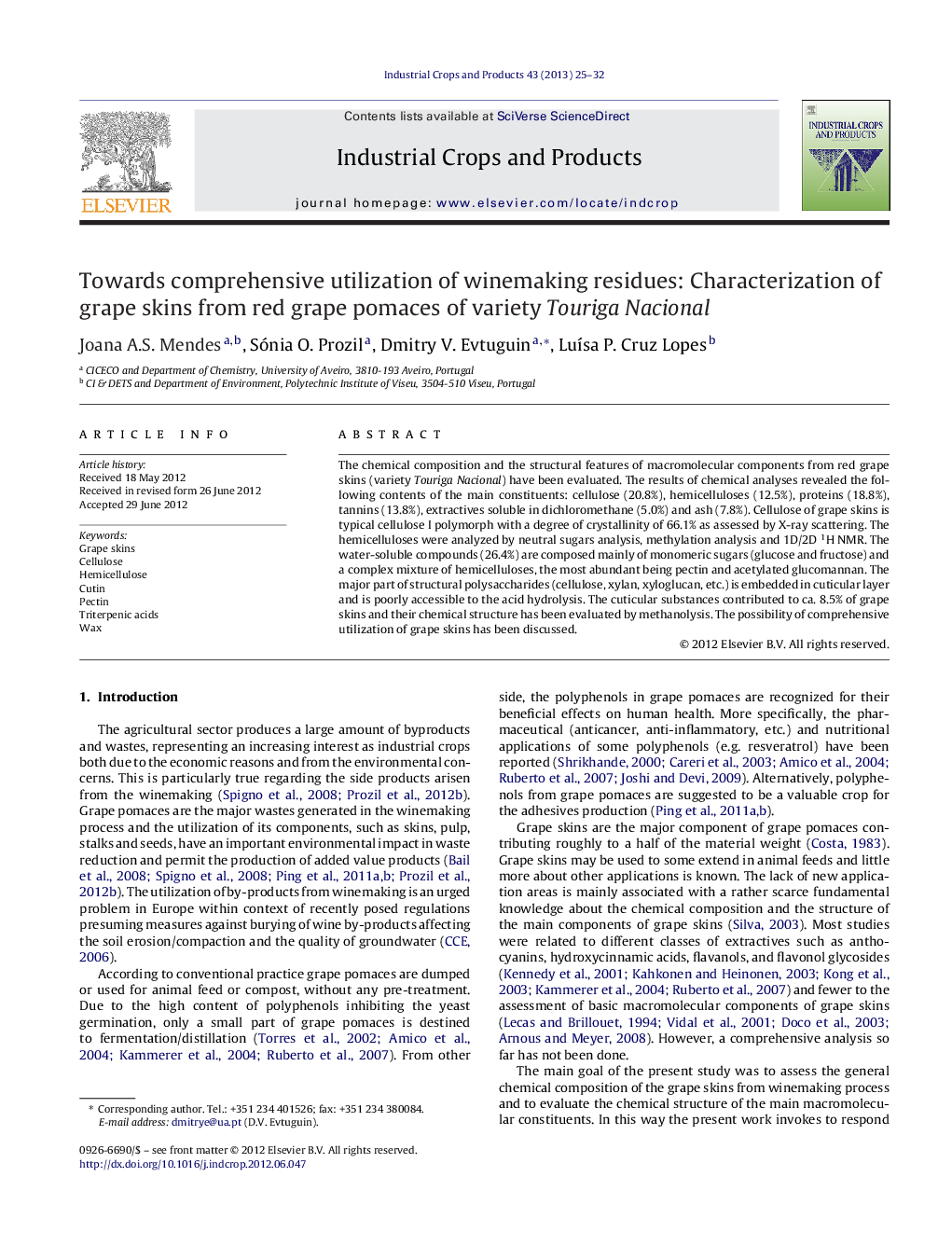| Article ID | Journal | Published Year | Pages | File Type |
|---|---|---|---|---|
| 4514090 | Industrial Crops and Products | 2013 | 8 Pages |
The chemical composition and the structural features of macromolecular components from red grape skins (variety Touriga Nacional) have been evaluated. The results of chemical analyses revealed the following contents of the main constituents: cellulose (20.8%), hemicelluloses (12.5%), proteins (18.8%), tannins (13.8%), extractives soluble in dichloromethane (5.0%) and ash (7.8%). Cellulose of grape skins is typical cellulose I polymorph with a degree of crystallinity of 66.1% as assessed by X-ray scattering. The hemicelluloses were analyzed by neutral sugars analysis, methylation analysis and 1D/2D 1H NMR. The water-soluble compounds (26.4%) are composed mainly of monomeric sugars (glucose and fructose) and a complex mixture of hemicelluloses, the most abundant being pectin and acetylated glucomannan. The major part of structural polysaccharides (cellulose, xylan, xyloglucan, etc.) is embedded in cuticular layer and is poorly accessible to the acid hydrolysis. The cuticular substances contributed to ca. 8.5% of grape skins and their chemical structure has been evaluated by methanolysis. The possibility of comprehensive utilization of grape skins has been discussed.
► Chemical composition of grape skins from red grape pomaces was assessed. ► Cellulose and hemicelluloses were the most abundant components. ► No lignin was detected in grape skins. ► The most abundant extractive in dichloromethane was oleanolic acid. ► The scheme for the comprehensive utilization of grape skins was proposed.
